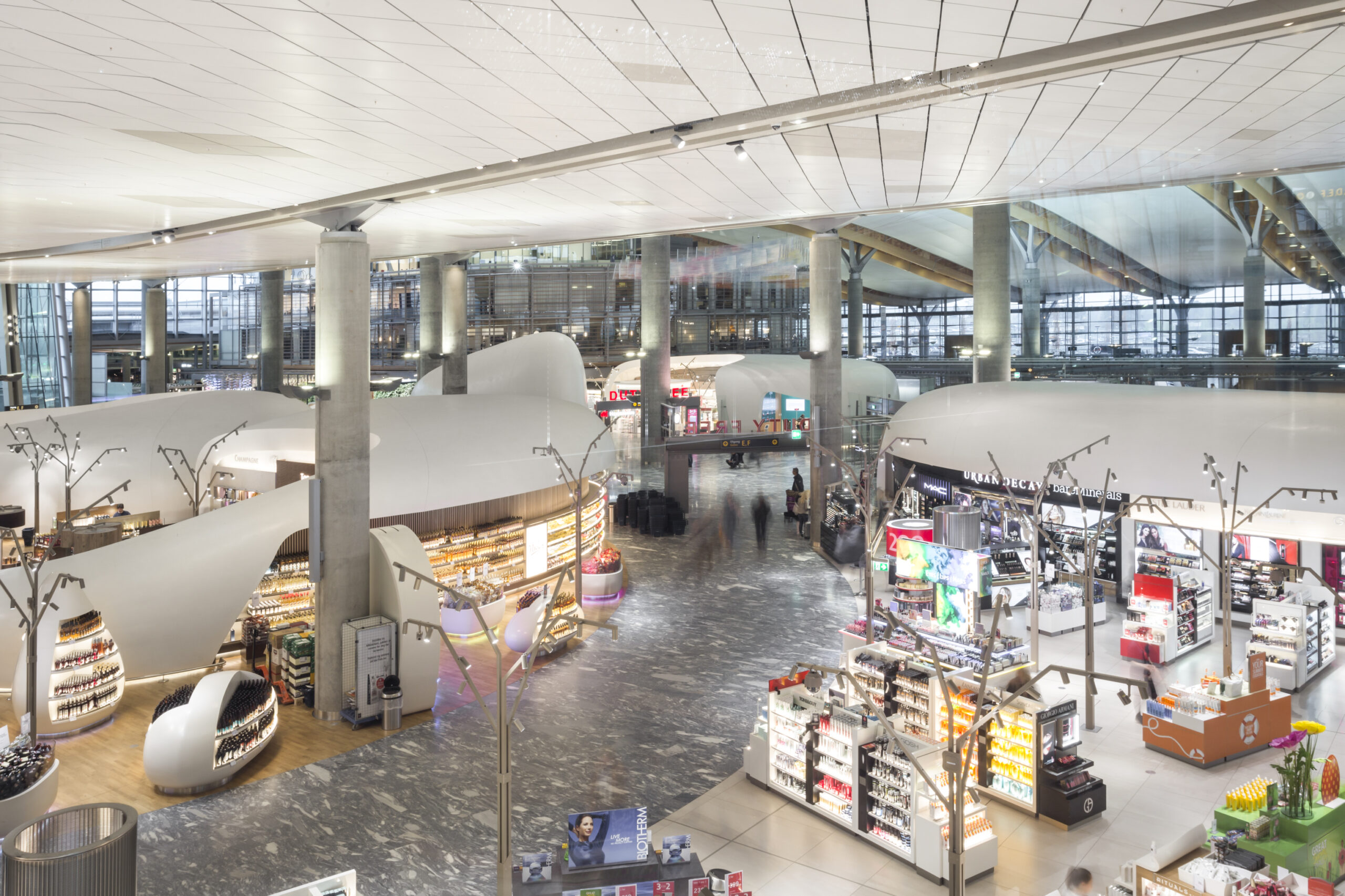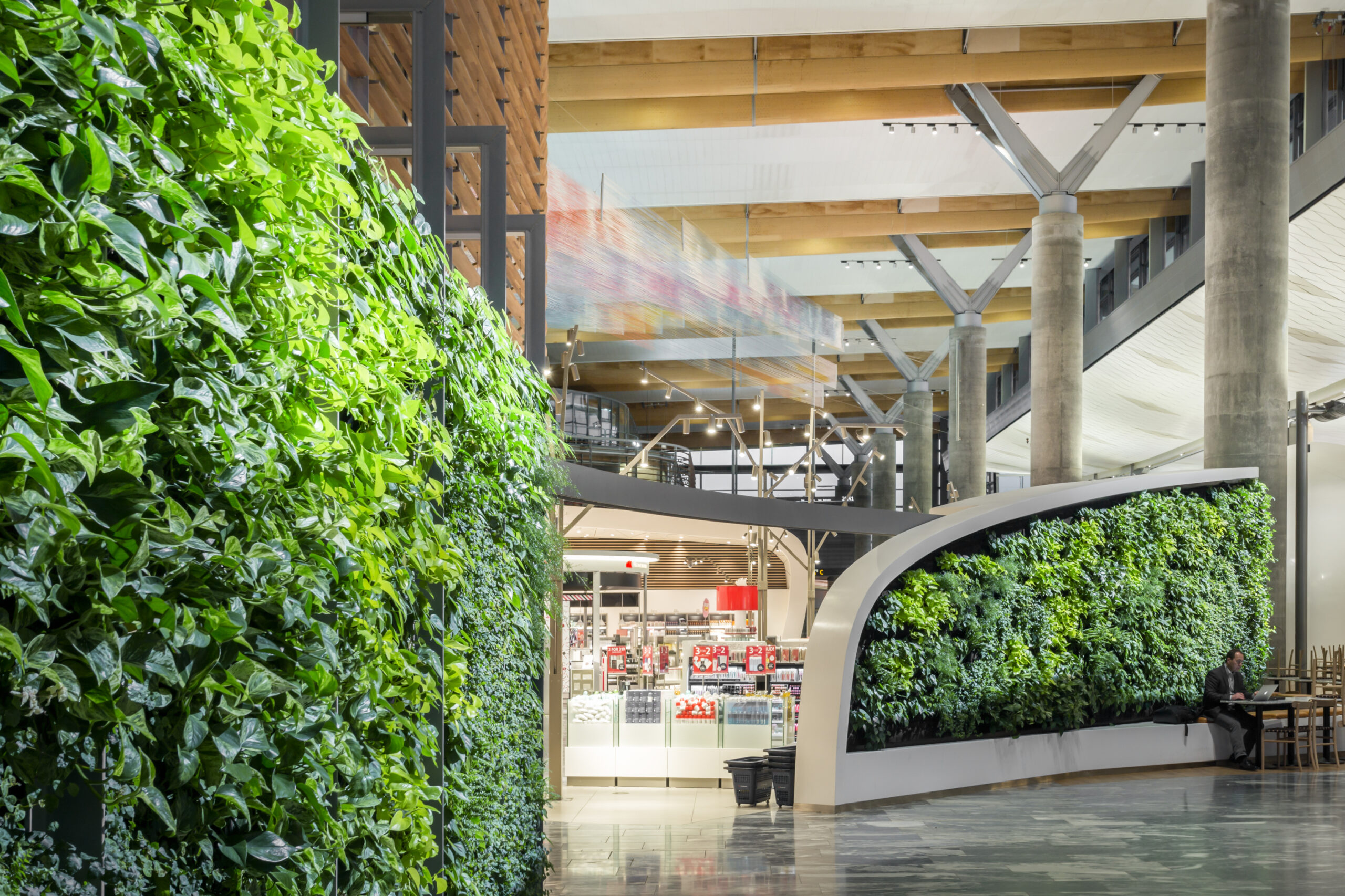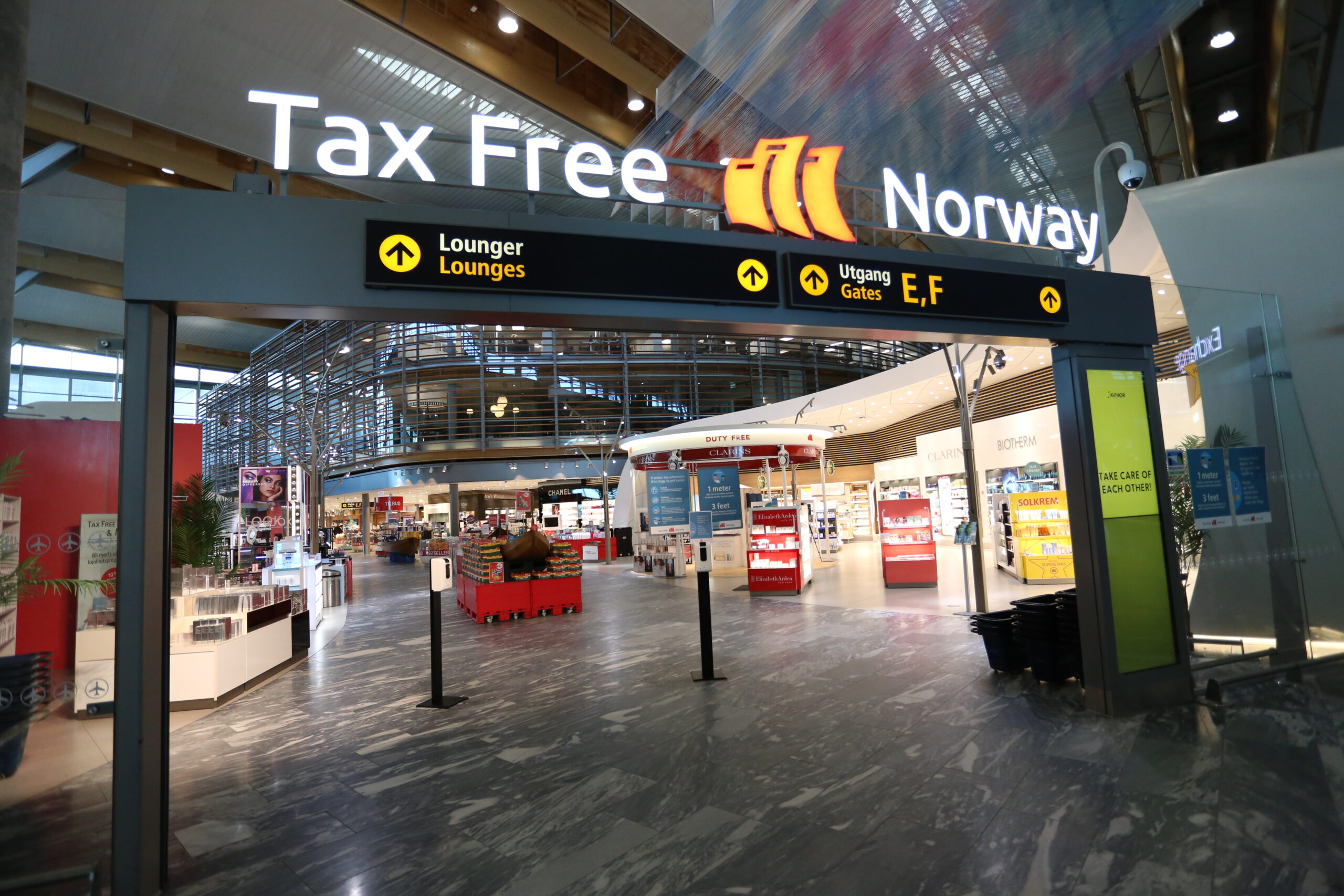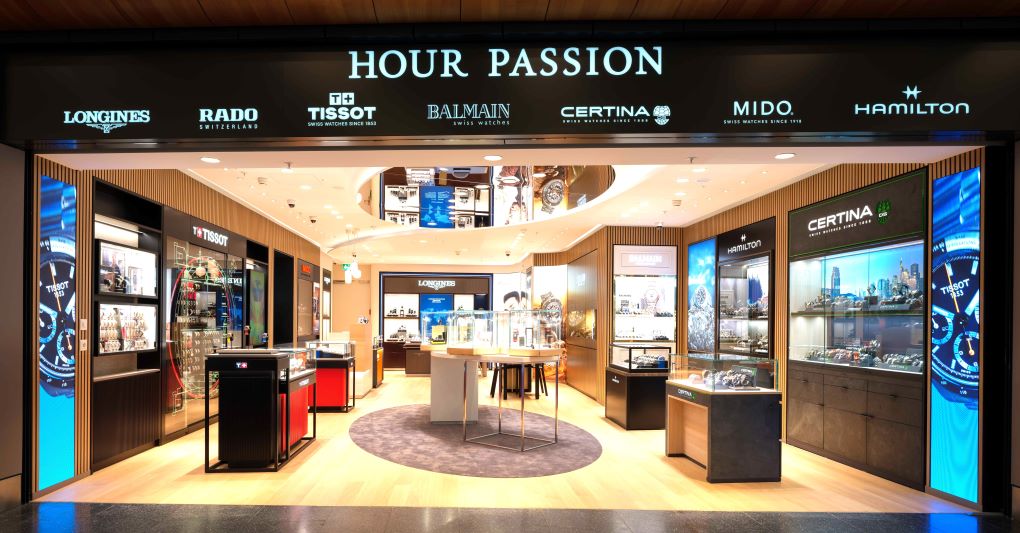NORWAY. The duty free & single price (Travel Value) contract at Norway’s airports is one of the world’s blue-chip travel retail concessions. As the contract comes to market – with an estimated value of NOK36 billion (around €3.6 billion) in turnover over the next five-year term – Dermot Davitt speaks to Avinor Executive Vice President for Commercial Areas Joachim Lupnaav Johnsen and Bergen Airport Head of Commercial Aina Tysse about the opportunity.

“Duty free is the backbone of our commercial financing, our oil you might say.” Avinor Executive Vice President for Commercial Areas Joachim Lupnaav Johnsen stresses the importance of the state-owned airports company’s core revenue stream as it launches a major tender this week for duty free and Travel Value (single price) shops at 11 Norwegian airports.

The tender – with a submission deadline of 23 April – is among the most attractive and lucrative in the airport world, with an estimated valuation by Avinor of NOK36 billion (around €3.6 billion) in turnover for the contract period from January 2023 to December 2027. [Note: The projected turnover figure has been adjusted from €3 billion, as published previously, due to updated passenger forecasts -Ed]
Such is the prize that it has excited the interest of many leading travel retailers, not only those based in Europe but around the world.
The business (duty free sales across the Avinor network in 2019 were around €550 million for incumbent Travel Retail Norway) is built on the high purchasing power of Norway’s affluent population – the average basket size in duty free is very high, and many Norwegians maximise their purchasing allowances.
Sales in international arrivals are particularly strong and represent more than 50% of the duty free business at Oslo Airport, the largest of the 11 airport locations covered by the tender.
The business is also influenced strongly by the wide price differential between duty free and Norway’s domestic market – where wines & spirits distribution is controlled by government agency Vinmonopolet.
| Tender timeline Launch date: 11 January |
The tender features three packages or clusters of airports, covering Oslo, larger regional airports and smaller airports, to reflect the differences in size, volume and traveller type (more below). Avinor says it is open to having one or multiple winners of the packages, depending on the offers that emerge.
Johnsen says: “There are big differences between Oslo, with its high, consistent volumes, and smaller airports with peaks only at certain periods. The packages reflect these very different operating scenarios. So it could be that we find one operator who takes it all, but equally we think we may have two or three bidders that take different parts of this business because it’s so diverse.
“It has to make sense financially for everyone. We are working with the people of Norway’s money so we have to fund their services well.”
He adds: “The point here is to make sure that we are creating an attractive business case for different vendors, large and small. Some of the global companies might have a preference for one of the larger packages, while local players may find more attractiveness and a better fit with others, due to the size and nature of the business in different airports. We are having conversations with many types of companies today. It is important that we can learn from them too.”
Income from duty free shops contributes significantly to Avinor’s financial performance, accounting traditionally for around 28% of the company’s annual revenue. But the duty free business is not simply about generating returns for its shareholder, the state – it is about funding its mission to connect Norway via air.
“At the end of the day we are also putting our head on the table and saying we would love to share more of the risk with our partners given the lessons we have learned around COVID.”
Johnsen says: “We are state-owned but under our model we fully finance our own operations. This means that we provide the foundation for an aviation network that connects the entire country. It is a political decision that Norway is tied together by air, where other countries use rail or ships. That means we have a great responsibility to support this national resource, aviation, with duty free a critical element.”

Potential bidders should also understand how ingrained duty free is to the psyche of travel. Johnsen says: “It holds a unique position. For Norwegian consumers, duty free is a central service, part of the journey itself. Buying their alcohol or snuff remains at the heart of the travel experience for many. We have a strong departures business but of course arrivals is very important for Norwegians, who lead spending in that channel.”
The share of spend among international visitors had been growing pre-COVID-19 as awareness of Norway’s tourism attractions increased. Avinor expects this to be enhanced further once the pandemic restrictions ease.

Bergen Airport Head of Commercial Aina Tysse says: “We are seeing different demographics emerging and that is a challenge now, to target and adapt to more overseas travellers and to encourage them to spend in duty free, as well as to understand what new, younger consumers want from the experience.”
Bergen represents the biggest location after Oslo, with a new terminal opened in 2017 that houses enhanced retail space in both arrivals and departures.
Tysse says: “We expect many more visitors to be drawn to our world-class natural attractions, experiences and activities in future. With the wide expanses of space we have in our country we may even be more attractive for people to visit. In Bergen we have the fjords, a well-known reason for visitors to come. And for Norwegians, they see duty free as a human right, more or less.”
Both commercial chiefs note the strong business case for bidders and ultimately the winning candidate(s).
Johnsen says: “The duty free basket size is very different from what you will find in almost any other market. This contract therefore stands as a lighthouse in the world of duty free because it is very profitable. The core shopping nationality is one of the wealthiest in the world and Norway is likely to be among the first economies to recover from the crisis, because of its assets and its wealth. The catch-up effect is going to be very strong.”
It is many years since a duty free tender was held at Norway’s airports – Gebr Heinemann-led Travel Retail Norway won a tender in 2004 with its initial contract beginning in January 2005, and has done an excellent job since, says the airport company. So, beyond a robust financial offer, what else is Avinor seeking from bidders this time, in light of COVID-19 and the hoped-for recovery?


Digital dynamism
Avinor says its partners should display “digital maturity,” as Johnsen puts it. “We are working a lot on that. There is a pre-order programme in place but it is still being piloted and remains a bit too manual. The volumes are so high that digital has to be an efficiency driver for our customers. It could be also a way to develop the concept to fit better with different customer segments. We are very open to learning from the best players in the world about how to build a world-class duty free offering.”
He adds: “Many people have switched to online shopping, and today we orient ourselves and we decide online what to buy. There are a lot of opportunities here if you can work with the lead times and just in time logistics to cope with demand. So imagine you can get onboard your plane in London, you sit down in your seat, you have a Wi-Fi connection onboard, you scroll through the duty free shop virtually and when you get to your destination, your purchase is ready. That kind of ease of shopping becomes a very interesting topic.
“But also you can do this from home, and there are so many constellations we can work with here. This will make the travel experience better, meaning you don’t have to look through a vast store, you can scroll and have even a wider selection of goods, and you can make it very efficient for passengers who want that.
“It’s also a very efficient way of handling goods for our vendors, if fewer hands need to touch the goods along the way. So both the top line and efficiency gains are important here, as well as the passenger experience itself. It is about offering choice, the choice to go fast and efficient, or to walk through and browse.
“It’s about having balance. We should invite people to spend time in the terminal, but it should also be possible for them to run through to their gate in 30 minutes. This kind of choice will be a central point in the future shopping experience. And then you can build in all kinds of segmentations with digital, bundling services together such as parking, fast track services, with the duty free offering a core part of that.”

The importance of arrivals
Arrivals represents half of sales at Oslo and is even higher at other locations such as Bergen Airport. That is partially, says Tysse, because most local travellers have come to the airport by car and can carry their full allowance away (including six bottles of wine). In Oslo, many locals use the train, making it less easy to transport their goods away.
Tysse notes: “We are the main airport for around 600,000 passengers who live further away and drive between one and three hours to reach us in Bergen. That explains the full spend in arrivals. On departure, it’s not so much about wines & spirits but for Norwegians it is about cosmetics and perhaps smaller bottles of spirts. Increasingly the business is driven by local goods to the increasing number of foreigners we are seeing. They want products that tell a story from our region.”
She adds: “The experience around each of our airports is and should be very different. That is something that we’d like to reflect in the scenery inside the shop but also the terminal building. When it comes to the product range, and since the increase of passengers is mainly from the inbound market, we must offer local spirits or chocolate made in Norway, something that these travellers can only buy here.
“The duty free shops on departure should give that last impression of where you’re travelling from. This is something we expect the new partner to develop with us.”
On the evolution of the mix, Johnsen adds: “We don’t anticipate great change and we outline our prognosis in the tender documents. It is very important to understand that there are different dynamics in different stores, depending on their share of Norwegian and tourist traffic.”

Avinor expects wines & spirits to continue leading sales strongly in arrivals, with a more balanced blend in departures, including a growing proportion from P&C. Johnsen says: “This is a mature business today, not a boom market any more. It is a stable, cash cow scenario but there are also growth opportunities still, with younger consumers, the adaptation to digital and overseas visitors too.”
Such is the curiosity and purchasing power of consumers that the partner or partners should also help elevate the reputation of the airports for bringing products and brands to Norway first, where possible.
Tysse says: “We want a partner that helps us become an early adopter of new products and of emerging categories. With many people travelling frequently the surprise factor is very important. What is it that consumers now want? What are we missing?”
Assessing and addressing risk
One focus for bidders will be on the generous tax free allowances that pertain in Norway, and whether these remain in place. Avinor says that any “political risk” that might force change is covered under contingencies in the contract documents.
Johnsen says: “Our financing model as it stands is attractive to government as there is money available for other services in the state. We are pretty confident that the duty free system will remain in place through the period.”
Norwegian domestic market pricing is the key benchmark, as set by the state monopoly. Johnsen says: “If consumers see the price and cannot see the difference, they won’t buy.”

On the contract model, while Avinor intends to retain the straight concession model it has operated for many years, it does plan to build in more flexibility than before.
Johnsen says: “We have seen many changes during this crisis and pandemic risk has become a new factor in aviation, retail and travel retail. That needs to be built into our contract.
“So we are actually taking a big leap forward in terms of flexibility in this tender. We are building in mechanisms to make sure that unlikely scenarios, like the one we are in now, are covered, including political risk.
“Variable concession fees are our major driver here. The MAG will be there, and there are elements of fixed leases and fixed costs to cover, but the model is one that moves us towards more variable terms and conditions. Historically this has been much more rigid. The MAG that made sense in a pre-pandemic world does not make sense now, as our vendors do not make money, we don’t make any money and you get this downward spiral. So common learning is important.
“At the end of the day we are also putting our head on the table and saying we would love to share more of the risk with our partners given the lessons we have learned around COVID. It is a balance we aim for to make things fair, simple and flexible. And we have strong hopes that it will be attractive and will present a very high profitability opportunity.”

Long lead time
The process began with the launch on Monday, 11 January, with an information meeting planned for early February, followed by virtual tours of the airports. The deadline for bids will be 23 April, with presentations by short-listed companies and negotiation planned for May/June, a decision likely in July and contract signed in August.
That offers around 16 months until the start date in January 2023. Avinor notes that it is coming to market early with the opportunity to give the winning candidate (assuming it appoints a new partner) the best possible chance to prepare logistically by January 2023.
Johnsen says: “We think that is sufficient time to prepare but it will be needed in these difficult times. Nobody can predict the future but we think we will be well over COVID by 2023. So that will represent a good starting point.”
For international bidders, we ask, can Avinor assure them that they will receive a fair and balanced hearing, even if they have little experience in the Norwegian or European market?
“Absolutely,” says Johnsen emphatically. “Norwegian law is strict, transparent and predictable, and the process as outlined is very firm. There are many rules to ensure transparency.”
For example, if one potential bidder asks a question, all participants will find the question and the answer from Avinor presented in the Q&A at tender portal Tendsign.com. “We want to assure any global vendors that are not in Norway or in the EU currently that they will have a professional and proactive partner in us. As a state-owned company we will put our pride and our best efforts into helping all potential partners.”
There is no legal requirement to have a Norwegian partner although it may help, notes Johnsen.
“Obviously there are benefits to knowing the market. But the long lead time also allows a company that is new to the market to get set up with their buying, logistics, store management. So for a new market entrant, if they win, there is an opportunity.”

So how will Avinor balance the financial offer with an assessment of qualitative factors?
Johnsen says: “We have a list of quality criteria and we have commercial criteria. It’s not only about money, there are many other elements we feel are important. We will try to understand every bidder’s offer with care and consciousness.”
Tysse says: “We are very conscious about the quality criteria, because the ability to give us a broad and relevant product range and service level to secure the passenger experience is important. And that is because it is valued so highly as part of the traveller journey. It’s very important for us to see that they also can deliver the quality criteria that we have specially mentioned in the documents.”
Other factors to consider will be changes to how space is allocated, notably at Oslo Airport, where transformation of the international airside environment is on the way. This will have a positive impact on the duty free opportunity, says Avinor. Indeed, it will also open up food & beverage and other retail opportunities, with further tenders coming later this year.
Towards a robust recovery
Looking to the future, the coronavirus pandemic has had a hugely negative impact on duty free revenue due to the sharp fall in passenger numbers. While noting that future traffic growth will depend on travel restrictions, infection rates and progress in vaccination, Avinor’s long-term scenarios for international traffic foresee a strong rebound in 2022 and a return to 2019 levels around 2023.

Johnsen says: “The big question will be where traffic comes from in future. What will the mix look like? Short-haul Europe will likely recover first, with long-haul later. We really don’t know yet how this will shape up but we should know more in six months and be much wiser by the time the contract begins in 2023.”
Tysse adds: “All the research says that Norway still has a strong reputation as a safe destination and our healthcare system is well rated. In surveys of people who want to travel post-crisis, Norway ranks very high due to its wide open spaces, natural attractions and how we have managed the pandemic. Norwegians also are travelling people so we see traffic coming back quite quickly and reaching previous levels. There are also expectations that vaccinations in Norway will be completed earlier than planned, maybe even in the first half of this year, which is encouraging.”
All of that, says Avinor, should build confidence in the prospects of this powerhouse business to continue delivering well into the future.
Johnsen says: “This is an exceptional contract in the duty free world. It’s 11 airports in three packages, all with different potential. In all of them you have high-value customers and very attractive shopping behaviour that you won’t find anywhere else in the world. And as a vendor you will meet a proactive and positive partner who is there to support and help you.
“The purpose of what we are doing here is to fund Norwegian aviation and infrastructure. It is not to fill the pockets of an airport’s shareholders with money. That is an important part of the framework and a consistently important message from our side.
“The current operator has been with us a long time and has helped create a good business for everyone involved. By going to market this is a health check for our business. It is an opportunity for us to learn and we are really looking forward to seeing what is out there.”
*Avinor is promoting the tender opportunity through The Moodie Davitt Report. Further details appear through the tender banner link on our home page.












